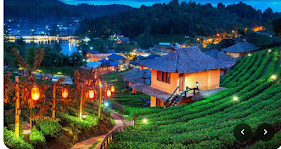Goblins
Goblins are small, grotesque, mythical creatures often depicted in folklore and fantasy literature as small, mischievous, and sometimes malicious humanoid beings that appear in the folklore of multiple European cultures. They are typically portrayed as green or Gray-skinned with sharp teeth, pointy ears, and often possessing a penchant for thievery and causing trouble.
Here are
some interesting facts about Goblins:
Origins and
Abilities: First
attested in stories from the Middle Ages, goblins are ascribed conflicting
abilities, temperaments, and appearances depending on the story and country of
origin. They range from mischievous household spirits to malicious, bestial
thieves. Goblins often have magical abilities similar to fairies or demons,
including the power to shapeshift. In various mythologies, goblins are known to
dwell in caves, forests, or other secluded places, emerging at night to carry
out their mischief.
Similar
Creatures: Similar
creatures include brownies, dwarves, duendes, gnomes, imps, leprechauns, and
kobolds. The term “goblin” is also used as a blanket term for all small, fay
creatures. Additionally, it can include goblin-like beings from other cultures,
such as the pukwudgie, dokkaebi, or ifrit.
Etymology: The word “goblin” was first
recorded in the 14th century. It likely comes from unattested Anglo-Norman
gobelin, similar to Old French gobelin, which was already attested around 1195.
In Medieval Latin, it was goblinus, the name of a devil or daemon haunting the
country around Évreux, Normandy. The term may be related to the German kobold and
to Medieval Latin cabalus or gobalus, itself from Greek κόβαλος (kobalos), meaning “rogue,” “knave,” or “imp.”
Folklore: Goblins are common in English,
Scottish, and Irish folklore. They serve as a blanket term for various evil or
mischievous spirits. Goblins have made appearances in numerous works of
literature, including J.R.R. Tolkien's Middle-earth legendarium, where they are
depicted as a race of creatures subservient to the dark lord Sauron. They also
feature prominently in various tabletop and video games, such as Dungeons &
Dragons, World of Warcraft, and The Elder Scrolls series.
For
example, redcaps are goblins who dye their hats in human blood in
Anglo-Scottish border folklore.
Remember, goblins are fascinating
creatures with diverse characteristics across different cultures! 🌟👹
courtesy:
Wikipedia
MR
🌟👹 🌟👹 🌟👹 🌟👹 🌟👹 🌟👹 🌟👹 🌟👹 🌟👹 🌟👹 🌟👹 🌟




Comments
Post a Comment